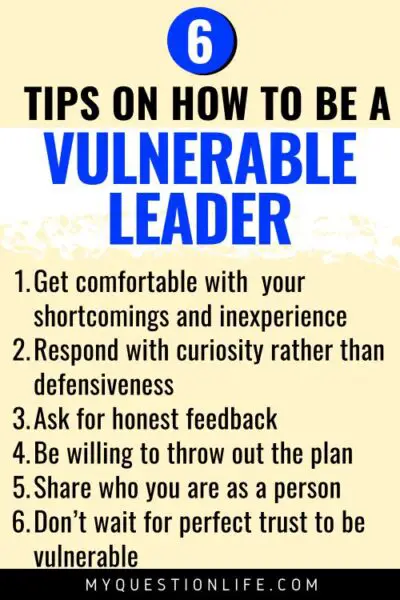[fusion_builder_container hundred_percent=”no” hundred_percent_height=”no” hundred_percent_height_scroll=”no” hundred_percent_height_center_content=”yes” equal_height_columns=”no” menu_anchor=”” hide_on_mobile=”small-visibility,medium-visibility,large-visibility” status=”published” publish_date=”” class=”@media only screen and ( min-width: 800px ) {padding-top: 0px; padding-right: 5px; padding-bottom: 0px; padding-left: 5px; }” id=”” background_color=”” background_image=”” background_position=”center center” background_repeat=”no-repeat” fade=”no” background_parallax=”none” enable_mobile=”no” parallax_speed=”0.3″ video_mp4=”” video_webm=”” video_ogv=”” video_url=”” video_aspect_ratio=”16:9″ video_loop=”yes” video_mute=”yes” video_preview_image=”” border_color=”” border_style=”solid” margin_top=”” margin_bottom=”” padding_top=”” padding_right=”%” padding_bottom=”” padding_left=”7%” admin_label=”Large Screen text” type=”legacy”][fusion_builder_row][fusion_builder_column type=”1_1″ layout=”1_1″ spacing=”” center_content=”no” link=”” target=”_self” min_height=”” hide_on_mobile=”small-visibility,medium-visibility,large-visibility” class=”” id=”” background_color=”” background_image=”” background_image_id=”” background_position=”left top” background_repeat=”no-repeat” hover_type=”none” border_color=”” border_style=”solid” border_position=”all” border_radius=”” box_shadow=”no” dimension_box_shadow=”” box_shadow_blur=”0″ box_shadow_spread=”0″ box_shadow_color=”” box_shadow_style=”” padding_top=”” padding_right=”” padding_bottom=”” padding_left=”0px” margin_top=”” margin_bottom=”” animation_type=”” animation_direction=”left” animation_speed=”0.3″ animation_offset=”” last=”true” first=”true” border_sizes_top=”0″ border_sizes_bottom=”0″ border_sizes_left=”0″ border_sizes_right=”0″ type=”1_1″][fusion_text columns=”” column_min_width=”” column_spacing=”” rule_style=”default” rule_size=”” rule_color=”” hide_on_mobile=”small-visibility,medium-visibility,large-visibility” class=”” id=”” animation_type=”” animation_direction=”left” animation_speed=”0.3″ animation_offset=””]
[/fusion_text][fusion_text columns=”” column_min_width=”” column_spacing=”” rule_style=”default” rule_size=”” rule_color=”” hide_on_mobile=”small-visibility,medium-visibility,large-visibility” class=”” id=”” animation_type=”” animation_direction=”left” animation_speed=”0.3″ animation_offset=””]
Vulnerable Leadership: Dare to Lead Facilitator Kathy Ball-Toncic on Being Vulnerable as a Leader
Kathy Ball-Toncic logged onto her computer a few minutes before the online training session was scheduled to start. Her Dare to Lead materials sat in front of her, neatly stacked and ready to go. She had experience with vulnerable leadership, and today marked the first of six four-hour sessions that she would lead as a Dare to Lead Facilitator.
Kathy took a deep breath, settling her nerves. This session would be her first time leading anyone through the Dare to Lead curriculum in a virtual setting. It hadn’t been that long since she trained with Brené Brown. (Her training with Brené Brown had prepared her for in-person work but not a virtual setting).
It might surprise some people that Kathy felt nervous. You see, she had over 15 years of leadership facilitation and coaching experience. The “expert” had taught at colleges, worked with high-up CEO’s, and led global teams in leadership development. In 2006, she even founded her own leadership consulting firm.
Yet here she was – leading a well-planned online workshop – and feeling vulnerable.
As she geared up for her introduction, Kathy decided to do something courageous. Rather than hide her feelings, she chose to share them with her students.
“This is the first time I’m doing this,” she told them. “I am passionate about and confident in the material, and I feel comfortable with you, but there are some aspects of the training I’m still unsure of. So I want you to tell me what works and doesn’t work for you.”
It comes as no surprise that the workshop was a huge success. But it wasn’t because Kathy “overcame” her vulnerable emotions. Instead, she credits the program’s success to her ability to share her vulnerability.
By embodying vulnerable leadership, Kathy encouraged the group to do the same. The transformative results, according to Kathy, spoke for themselves.
.
What is Vulnerable Leadership?
Vulnerability is our willingness to take emotional risks, even if we can’t predict the outcome. We present our most authentic selves and feelings, silently asking, “Accept us as we are.” In doing this, we open ourselves up to the possibility of uncertainty, rejection, and judgment.
It requires a great deal of courage to put ourselves out there and be vulnerable.
Vulnerability in leadership is no different. Vulnerable leaders are willing to present their most authentic selves without being able to control the outcome. This vulnerability might include actions like admitting imperfections, acknowledging uncertainty, exposing emotions, or asking for help.
When Kathy told her training group that she was unsure of her first time teaching online, she took a vulnerable stance. She showed herself to be a real person with real feelings, rather than a closed-off expert. In doing so, she unified herself with the group members.
Many leaders push back against vulnerability as a sign of incompetence. There’s a critical distinction, however, between being vulnerable and being incompetent.
Being vulnerable is having the courage to say, “This is an area I struggle with/don’t know much about/want feedback on so that I can grow.” Vulnerable leadership is working toward change with an open mind and heart. Incompetence, on the other hand, is either the lack of awareness or unwillingness to grow. It’s being bad at something and stopping there.
Kathy’s act of vulnerability opened the door for honest and genuine feedback. Not only did she grow more, but she also modeled the importance of vulnerability for the group. That model would set the tone for her students to practice their own vulnerability, ultimately opening themselves up for more transformation.
Unfortunately, vulnerable leadership often gets lost in our current culture.
.
What’s Holding Our Leaders Back from Vulnerability
Picture some of the most quintessential authority figures that you know or observed growing up. Maybe they were your teachers, coaches, or bosses. What qualities would you attribute to them? Did they ever talk about their emotions or shortcomings?
Many of us grew up with the model that leaders should create distance between themselves and their followers. The differences in power manifested in physical and emotional barriers. Rarely would authority figures admit mistakes or have a “human” conversation.
We’ve started to shift away from this antiquated notion of leadership. However, remnants of these past beliefs often influence our thinking, sometimes in very subtle ways. In particular, we see their impact in the damaging myths about vulnerability that pervade our workplaces and organizations.
The biggest misconception is that being vulnerable equates to weakness. We think leaders shouldn’t be vulnerable because it makes them look less credible or compelling. Our culture makes it hard to be vulnerable.
To be successful, individuals need to challenge this perspective. Being vulnerable takes a great deal of courage. The more vulnerable leaders are willing to be, the more they can model vulnerability for others.
.
A Lack of self-awareness Holds Back Vulnerable Leadership
The other main obstacle holding us back is our lack of self-awareness. The majority of us aren’t aware of our actions or thoughts (despite our biases making us think that we are). In fact, 90% of people believe they are self-aware when less than 10% actually are.
What’s more, studies prove that self-awareness is the most critical quality of a successful leader. It takes work and vulnerability to develop your self-awareness. Fortunately, there’s a self-awareness course designed specifically for you. (You can check out more details at the bottom of this post.)
.
Kathy Ball-Toncic: How Vulnerable Leadership Can Lead to Transformative Moments
Another damaging myth about vulnerability is that it’s only reserved for deep, dark emotions. This notion couldn’t be further from the truth. Vulnerability is a daily practice, and it’s one that shows up in a multitude of actions and behaviors.
When I interviewed Kathy Ball-Toncic, she said vulnerability plays a role in her life every day. Whether she’s interacting with a new client, learning something new, or putting herself out there, she’s continuously opening herself up to emotional uncertainty.
What comes of these efforts? In Kathy’s words: “Transformation. I keep putting myself out there, and it opens up my life to new opportunities.”
This practice of vulnerable leadership doesn’t just benefit her. Every time she models vulnerability, she invites the people around her to do the same.
“Someone grows every time there is an act of vulnerability,” Kathy says. “It’s amazing to see the connections that come from when we are vulnerable.”
Kathy described countless experiences with fostering vulnerability in groups, but I’m sure we’ve all seen examples in our own lives. When one person in a group is willing to share a personal story, it almost always opens the door for others to do the same. This sharing helps create connection and enormous trust among a group.
This trust will benefit any group you lead, whether it’s for a team, office, or organization. Our focus frequently gets lost on the numbers or reports, when we should aim to direct it first on collaboration and community.
“Successful organizations need vulnerable leadership,” Kathy says. “It’s about environment (or culture) and the people. In the end, that’s what will contribute to the bottom line. Care and vulnerability will sustain success in the long run.”
How can leaders shift their focus from reports to people? Fortunately, Kathy helped inspire six tips for vulnerable leadership.
Learn more about why self-awareness is essential for successful leadership.
.
Tips on How to Be Be a More Vulnerable Leader
Being a more vulnerable leader requires courage. It also doesn’t happen overnight. However, the more you practice vulnerability and follow these tips, the easier it will be to embody vulnerable leadership.
1. Get comfortable with your shortcomings and imperfections.
Contrary to popular belief, leaders aren’t perfect, nor should they pretend to be. Perfection-demanding cultures hinder trust, creativity, connection, and growth. When vulnerable leaders allow themselves to own their shortcomings and imperfections, they create an environment that accepts mistakes as inspiration for growth. They also inspire opportunities for openness and connection (rather than secrecy and shame).
2. Respond with curiosity rather than defensiveness.
Vulnerable leaders are willing to accept challenging ideas as a positive opportunity for growth. Rather than get defensive, they know how to respond with curiosity and a willingness to lean into the conversation. Kathy refers to this a having a “learner mindset” instead of a “knower mindset.” Maintaining a learner mindset will not only help foster richer dialogue and a deeper understanding, but it will help model curiosity for others.
3. Ask for honest feedback.
How often do you create opportunities for honest, genuine feedback? It’s incredibly vulnerable to give and receive feedback, therefore many of us avoid doing it. However, it’s only through feedback that we can improve and work to achieve the best results. And it’s only through vulnerable leadership that trusting environments for feedback can be created. By welcoming feedback, leaders are showing the importance of asking – and implementing – feedback.
4. Be willing to throw out the plan.
Most of us like to be prepared. After all, preparation helps create a sense of control. Leaders are often in charge of this preparation, whether large-scale (such as a company plan) or small-scale (such as a meeting agenda). Life doesn’t always go as planned, however, and vulnerable leaders understand this. Vulnerable leadership means being willing to throw out plans if something more pressing or important comes up, even if it invites greater uncertainty.
5. Share who you are as a person.
Individuals don’t lose their humanity when they become leaders, yet we often dismiss leaders as people once promoted. To create unified communities, people must be willing to present their authentic selves. The more leaders share who they are, the more their actions encourage others to do the same. According to Kathy, “Every time leaders have the courage to put down their armor, rich conversations and learning follow every single time.”
6. Don’t wait for trust to be vulnerable (because it will never come).
Many of us refrain from being vulnerable under the guise that we’re waiting for more trust to be established. This perspective, however, hinders vulnerability. Building trust and vulnerability is a cycle, but being vulnerable comes with building greater trust. Vulnerable leaders understand that trust is established by creating opportunities for vulnerability.
.
Putting Vulnerable Leadership into Practice
When I started as a young teacher, I thought it was important to establish myself as the authority figure. I refrained from joking with my students, and I tried to hide any mistakes I made. Rarely did I give them a voice, and when I did, I defended my actions against their feedback.
Since then, I’ve learned how ineffective my initial strategies were. How could I teach the benefits of mistakes if I didn’t do so for myself? What example did I set when I became defensive rather than curious?
Now, I embody vulnerability. I readily ask for feedback and take ownership when my work falls short. In doing so, I hope my students realize that they should too.
Vulnerable leadership is not reserved for top CEOs and consulting firms. Many of us occupy the role of a leader in our jobs, family, and social groups. Whatever it is we’re trying to achieve, being vulnerable will help us get there.
[/fusion_text][/fusion_builder_column][/fusion_builder_row][/fusion_builder_container][fusion_builder_container hundred_percent=”no” hundred_percent_height=”no” hundred_percent_height_scroll=”no” hundred_percent_height_center_content=”yes” equal_height_columns=”no” menu_anchor=”” hide_on_mobile=”small-visibility,medium-visibility,large-visibility” status=”published” publish_date=”” class=”” id=”” link_color=”” link_hover_color=”” border_color=”” border_style=”solid” margin_top=”” margin_bottom=”” padding_top=”3%” padding_right=”10%” padding_bottom=”” padding_left=”10%” gradient_start_color=”” gradient_end_color=”” gradient_start_position=”0″ gradient_end_position=”100″ gradient_type=”linear” radial_direction=”center center” linear_angle=”180″ background_color=”rgba(2,2,201,0.19)” background_image=”” background_position=”center center” background_repeat=”no-repeat” fade=”no” background_parallax=”none” enable_mobile=”no” parallax_speed=”0.3″ background_blend_mode=”none” video_mp4=”” video_webm=”” video_ogv=”” video_url=”” video_aspect_ratio=”16:9″ video_loop=”yes” video_mute=”yes” video_preview_image=”” filter_hue=”0″ filter_saturation=”100″ filter_brightness=”100″ filter_contrast=”100″ filter_invert=”0″ filter_sepia=”0″ filter_opacity=”100″ filter_blur=”0″ filter_hue_hover=”0″ filter_saturation_hover=”100″ filter_brightness_hover=”100″ filter_contrast_hover=”100″ filter_invert_hover=”0″ filter_sepia_hover=”0″ filter_opacity_hover=”100″ filter_blur_hover=”0″ type=”legacy”][fusion_builder_row][fusion_builder_column type=”1_1″ layout=”1_1″ spacing=”” center_content=”no” link=”” target=”_self” min_height=”” hide_on_mobile=”small-visibility,medium-visibility,large-visibility” class=”” id=”” hover_type=”none” border_color=”” border_style=”solid” border_position=”all” box_shadow=”no” box_shadow_blur=”0″ box_shadow_spread=”0″ box_shadow_color=”” box_shadow_style=”” background_type=”single” gradient_start_position=”0″ gradient_end_position=”100″ gradient_type=”linear” radial_direction=”center center” linear_angle=”180″ background_color=”” background_image=”” background_image_id=”” background_position=”left top” background_repeat=”no-repeat” background_blend_mode=”none” animation_type=”” animation_direction=”left” animation_speed=”0.3″ animation_offset=”” filter_type=”regular” filter_hue=”0″ filter_saturation=”100″ filter_brightness=”100″ filter_contrast=”100″ filter_invert=”0″ filter_sepia=”0″ filter_opacity=”100″ filter_blur=”0″ filter_hue_hover=”0″ filter_saturation_hover=”100″ filter_brightness_hover=”100″ filter_contrast_hover=”100″ filter_invert_hover=”0″ filter_sepia_hover=”0″ filter_opacity_hover=”100″ filter_blur_hover=”0″ first=”true” last=”true” border_sizes_top=”0″ border_sizes_bottom=”0″ border_sizes_left=”0″ border_sizes_right=”0″ type=”1_1″][fusion_text columns=”” column_min_width=”” column_spacing=”” rule_style=”default” rule_size=”” rule_color=”” animation_type=”” animation_direction=”left” animation_speed=”0.3″ animation_offset=”” hide_on_mobile=”small-visibility,medium-visibility,large-visibility” class=”” id=””]
Top Books on Vulnerability: Brené Brown Quotes and Books
[/fusion_text][/fusion_builder_column][fusion_builder_column type=”1_3″ layout=”1_3″ spacing=”” center_content=”yes” link=”” target=”_self” min_height=”none” hide_on_mobile=”small-visibility,medium-visibility,large-visibility” class=”” id=”” hover_type=”none” border_color=”” border_style=”solid” border_position=”all” border_radius=”” box_shadow=”no” dimension_box_shadow=”” box_shadow_blur=”0″ box_shadow_spread=”0″ box_shadow_color=”” box_shadow_style=”” padding_top=”” padding_right=”” padding_bottom=”” padding_left=”68px” margin_top=”” margin_bottom=”” background_type=”single” gradient_start_color=”” gradient_end_color=”” gradient_start_position=”0″ gradient_end_position=”100″ gradient_type=”linear” radial_direction=”center center” linear_angle=”180″ background_color=”” background_image=”” background_image_id=”” background_position=”left top” background_repeat=”no-repeat” background_blend_mode=”none” animation_type=”” animation_direction=”left” animation_speed=”0.3″ animation_offset=”” filter_type=”regular” filter_hue=”0″ filter_saturation=”100″ filter_brightness=”100″ filter_contrast=”100″ filter_invert=”0″ filter_sepia=”0″ filter_opacity=”100″ filter_blur=”0″ filter_hue_hover=”0″ filter_saturation_hover=”100″ filter_brightness_hover=”100″ filter_contrast_hover=”100″ filter_invert_hover=”0″ filter_sepia_hover=”0″ filter_opacity_hover=”100″ filter_blur_hover=”0″ last=”false” first=”true” align_self=”flex-start” align_content=”center” border_sizes_top=”0″ border_sizes_bottom=”0″ border_sizes_left=”0″ border_sizes_right=”0″ spacing_right=”” type=”1_3″][fusion_code]PGlmcmFtZSBzdHlsZT0id2lkdGg6MTIwcHg7aGVpZ2h0OjI0MHB4OyIgbWFyZ2lud2lkdGg9IjAiIG1hcmdpbmhlaWdodD0iMCIgc2Nyb2xsaW5nPSJubyIgZnJhbWVib3JkZXI9IjAiIHNyYz0iLy93cy1uYS5hbWF6b24tYWRzeXN0ZW0uY29tL3dpZGdldHMvcT9TZXJ2aWNlVmVyc2lvbj0yMDA3MDgyMiZPbmVKUz0xJk9wZXJhdGlvbj1HZXRBZEh0bWwmTWFya2V0UGxhY2U9VVMmc291cmNlPWFjJnJlZj1xZl9zcF9hc2luX3RpbCZhZF90eXBlPXByb2R1Y3RfbGluayZ0cmFja2luZ19pZD1teXF1ZXN0aW9ubGlmLTIwJm1hcmtldHBsYWNlPWFtYXpvbiZyZWdpb249VVMmcGxhY2VtZW50PTAzOTk1OTI1MjAmYXNpbnM9MDM5OTU5MjUyMCZsaW5rSWQ9MWFhZGI0N2I1MmQ4MmY5MzNlNTg4OTllYjkxODJkMzQmc2hvd19ib3JkZXI9ZmFsc2UmbGlua19vcGVuc19pbl9uZXdfd2luZG93PWZhbHNlJnByaWNlX2NvbG9yPTMzMzMzMyZ0aXRsZV9jb2xvcj0wMDY2YzAmYmdfY29sb3I9ZmZmZmZmIj4KICAgIDwvaWZyYW1lPg==[/fusion_code][/fusion_builder_column][fusion_builder_column type=”2_3″ layout=”2_3″ spacing=”” center_content=”no” link=”” target=”_self” min_height=”” hide_on_mobile=”small-visibility,medium-visibility,large-visibility” class=”” id=”” hover_type=”none” border_color=”” border_style=”solid” border_position=”all” border_radius=”” box_shadow=”no” dimension_box_shadow=”” box_shadow_blur=”0″ box_shadow_spread=”0″ box_shadow_color=”” box_shadow_style=”” padding_top=”” padding_right=”” padding_bottom=”” padding_left=”” margin_top=”” margin_bottom=”” background_type=”single” gradient_start_color=”” gradient_end_color=”” gradient_start_position=”0″ gradient_end_position=”100″ gradient_type=”linear” radial_direction=”center center” linear_angle=”180″ background_color=”” background_image=”” background_image_id=”” background_position=”left top” background_repeat=”no-repeat” background_blend_mode=”none” animation_type=”” animation_direction=”left” animation_speed=”0.3″ animation_offset=”” filter_type=”regular” filter_hue=”0″ filter_saturation=”100″ filter_brightness=”100″ filter_contrast=”100″ filter_invert=”0″ filter_sepia=”0″ filter_opacity=”100″ filter_blur=”0″ filter_hue_hover=”0″ filter_saturation_hover=”100″ filter_brightness_hover=”100″ filter_contrast_hover=”100″ filter_invert_hover=”0″ filter_sepia_hover=”0″ filter_opacity_hover=”100″ filter_blur_hover=”0″ last=”true” first=”false” border_sizes_top=”0″ border_sizes_bottom=”0″ border_sizes_left=”0″ border_sizes_right=”0″ type=”2_3″][fusion_text columns=”” column_min_width=”” column_spacing=”” rule_style=”default” rule_size=”” rule_color=”” hide_on_mobile=”small-visibility,medium-visibility,large-visibility” class=”” id=”” animation_type=”” animation_direction=”left” animation_speed=”0.3″ animation_offset=””]
Dare to Lead: Brave Work. Tough Conversations. Whole Hearts. by Brené Brown
A groundbreaking book on how to be a vulnerable leader and why it’s critical for success. In this NY Times Bestseller, Brené Brown in fighting against our current culture and answering the question: How do you cultivate braver, more daring leaders, and how do you embed the value of courage in your culture? Packed with stories, research, and interviews, this book is not only informative, but incredibly engaging.
[/fusion_text][/fusion_builder_column][fusion_builder_column type=”1_3″ layout=”1_3″ spacing=”” center_content=”no” link=”” target=”_self” min_height=”” hide_on_mobile=”small-visibility,medium-visibility,large-visibility” class=”” id=”” hover_type=”none” border_color=”” border_style=”solid” border_position=”all” box_shadow=”no” box_shadow_blur=”0″ box_shadow_spread=”0″ box_shadow_color=”” box_shadow_style=”” background_type=”single” gradient_start_position=”0″ gradient_end_position=”100″ gradient_type=”linear” radial_direction=”center center” linear_angle=”180″ background_color=”” background_image=”” background_image_id=”” background_position=”left top” background_repeat=”no-repeat” background_blend_mode=”none” animation_type=”” animation_direction=”left” animation_speed=”0.3″ animation_offset=”” filter_type=”regular” filter_hue=”0″ filter_saturation=”100″ filter_brightness=”100″ filter_contrast=”100″ filter_invert=”0″ filter_sepia=”0″ filter_opacity=”100″ filter_blur=”0″ filter_hue_hover=”0″ filter_saturation_hover=”100″ filter_brightness_hover=”100″ filter_contrast_hover=”100″ filter_invert_hover=”0″ filter_sepia_hover=”0″ filter_opacity_hover=”100″ filter_blur_hover=”0″ last=”false” first=”true” padding_left=”68px” border_sizes_top=”0″ border_sizes_bottom=”0″ border_sizes_left=”0″ border_sizes_right=”0″ spacing_right=”” type=”1_3″][fusion_code]PGlmcmFtZSBzdHlsZT0id2lkdGg6MTIwcHg7aGVpZ2h0OjI0MHB4OyIgbWFyZ2lud2lkdGg9IjAiIG1hcmdpbmhlaWdodD0iMCIgc2Nyb2xsaW5nPSJubyIgZnJhbWVib3JkZXI9IjAiIHNyYz0iLy93cy1uYS5hbWF6b24tYWRzeXN0ZW0uY29tL3dpZGdldHMvcT9TZXJ2aWNlVmVyc2lvbj0yMDA3MDgyMiZPbmVKUz0xJk9wZXJhdGlvbj1HZXRBZEh0bWwmTWFya2V0UGxhY2U9VVMmc291cmNlPWFjJnJlZj10Zl90aWwmYWRfdHlwZT1wcm9kdWN0X2xpbmsmdHJhY2tpbmdfaWQ9bXlxdWVzdGlvbmxpZi0yMCZtYXJrZXRwbGFjZT1hbWF6b24mcmVnaW9uPVVTJnBsYWNlbWVudD0xNTkyNDA4NDE5JmFzaW5zPTE1OTI0MDg0MTkmbGlua0lkPWM2N2JiY2QzNmE0OGViY2JlMGRlNjJiYzJiNGI2YTA0JnNob3dfYm9yZGVyPWZhbHNlJmxpbmtfb3BlbnNfaW5fbmV3X3dpbmRvdz1mYWxzZSZwcmljZV9jb2xvcj0zMzMzMzMmdGl0bGVfY29sb3I9MDA2NmMwJmJnX2NvbG9yPWZmZmZmZiI+CiAgICA8L2lmcmFtZT4=[/fusion_code][/fusion_builder_column][fusion_builder_column type=”2_3″ layout=”2_3″ spacing=”” center_content=”no” link=”” target=”_self” min_height=”” hide_on_mobile=”small-visibility,medium-visibility,large-visibility” class=”” id=”” hover_type=”none” border_color=”” border_style=”solid” border_position=”all” box_shadow=”no” box_shadow_blur=”0″ box_shadow_spread=”0″ box_shadow_color=”” box_shadow_style=”” background_type=”single” gradient_start_position=”0″ gradient_end_position=”100″ gradient_type=”linear” radial_direction=”center center” linear_angle=”180″ background_color=”” background_image=”” background_image_id=”” background_position=”left top” background_repeat=”no-repeat” background_blend_mode=”none” animation_type=”” animation_direction=”left” animation_speed=”0.3″ animation_offset=”” filter_type=”regular” filter_hue=”0″ filter_saturation=”100″ filter_brightness=”100″ filter_contrast=”100″ filter_invert=”0″ filter_sepia=”0″ filter_opacity=”100″ filter_blur=”0″ filter_hue_hover=”0″ filter_saturation_hover=”100″ filter_brightness_hover=”100″ filter_contrast_hover=”100″ filter_invert_hover=”0″ filter_sepia_hover=”0″ filter_opacity_hover=”100″ filter_blur_hover=”0″ last=”true” first=”false” border_sizes_top=”0″ border_sizes_bottom=”0″ border_sizes_left=”0″ border_sizes_right=”0″ type=”2_3″][fusion_text columns=”” column_min_width=”” column_spacing=”” rule_style=”default” rule_size=”” rule_color=”” hide_on_mobile=”small-visibility,medium-visibility,large-visibility” class=”” id=”” animation_type=”” animation_direction=”left” animation_speed=”0.3″ animation_offset=””]
Daring Greatly: How the Courage to Be Vulnerable Transforms the Way We Live, Love, Parent, and Lead by Brené Brown
A book that will change your thinking about how you live, love, and interact with others in our society. Brown dives into the cultural expectations that we face, as well as the emotions that hold us back from finding true joy. In the book, she writes, “When we shut ourselves off from vulnerability, we distance ourselves from the experiences that bring purpose and meaning to our lives.”
[/fusion_text][/fusion_builder_column][fusion_builder_column type=”1_3″ layout=”1_3″ spacing=”” center_content=”no” link=”” target=”_self” min_height=”” hide_on_mobile=”small-visibility,medium-visibility,large-visibility” class=”” id=”” hover_type=”none” border_color=”” border_style=”solid” border_position=”all” box_shadow=”no” box_shadow_blur=”0″ box_shadow_spread=”0″ box_shadow_color=”” box_shadow_style=”” background_type=”single” gradient_start_position=”0″ gradient_end_position=”100″ gradient_type=”linear” radial_direction=”center center” linear_angle=”180″ background_color=”” background_image=”” background_image_id=”” background_position=”left top” background_repeat=”no-repeat” background_blend_mode=”none” animation_type=”” animation_direction=”left” animation_speed=”0.3″ animation_offset=”” filter_type=”regular” filter_hue=”0″ filter_saturation=”100″ filter_brightness=”100″ filter_contrast=”100″ filter_invert=”0″ filter_sepia=”0″ filter_opacity=”100″ filter_blur=”0″ filter_hue_hover=”0″ filter_saturation_hover=”100″ filter_brightness_hover=”100″ filter_contrast_hover=”100″ filter_invert_hover=”0″ filter_sepia_hover=”0″ filter_opacity_hover=”100″ filter_blur_hover=”0″ last=”false” first=”true” padding_left=”73px” border_sizes_top=”0″ border_sizes_bottom=”0″ border_sizes_left=”0″ border_sizes_right=”0″ spacing_right=”” type=”1_3″][fusion_code]PGlmcmFtZSBzdHlsZT0id2lkdGg6MTIwcHg7aGVpZ2h0OjI0MHB4OyIgbWFyZ2lud2lkdGg9IjAiIG1hcmdpbmhlaWdodD0iMCIgc2Nyb2xsaW5nPSJubyIgZnJhbWVib3JkZXI9IjAiIHNyYz0iLy93cy1uYS5hbWF6b24tYWRzeXN0ZW0uY29tL3dpZGdldHMvcT9TZXJ2aWNlVmVyc2lvbj0yMDA3MDgyMiZPbmVKUz0xJk9wZXJhdGlvbj1HZXRBZEh0bWwmTWFya2V0UGxhY2U9VVMmc291cmNlPWFjJnJlZj10Zl90aWwmYWRfdHlwZT1wcm9kdWN0X2xpbmsmdHJhY2tpbmdfaWQ9bXlxdWVzdGlvbmxpZi0yMCZtYXJrZXRwbGFjZT1hbWF6b24mcmVnaW9uPVVTJnBsYWNlbWVudD0wODEyOTg1ODE4JmFzaW5zPTA4MTI5ODU4MTgmbGlua0lkPWM5Mjc3Mzk4OWFkOTA3MjhmNzlmNzEyYmEwMzlhZjNmJnNob3dfYm9yZGVyPWZhbHNlJmxpbmtfb3BlbnNfaW5fbmV3X3dpbmRvdz1mYWxzZSZwcmljZV9jb2xvcj0zMzMzMzMmdGl0bGVfY29sb3I9MDA2NmMwJmJnX2NvbG9yPWZmZmZmZiI+CiAgICA8L2lmcmFtZT4=[/fusion_code][/fusion_builder_column][fusion_builder_column type=”2_3″ layout=”2_3″ spacing=”” center_content=”no” link=”” target=”_self” min_height=”” hide_on_mobile=”small-visibility,medium-visibility,large-visibility” class=”” id=”” hover_type=”none” border_color=”” border_style=”solid” border_position=”all” box_shadow=”no” box_shadow_blur=”0″ box_shadow_spread=”0″ box_shadow_color=”” box_shadow_style=”” background_type=”single” gradient_start_position=”0″ gradient_end_position=”100″ gradient_type=”linear” radial_direction=”center center” linear_angle=”180″ background_color=”” background_image=”” background_image_id=”” background_position=”left top” background_repeat=”no-repeat” background_blend_mode=”none” animation_type=”” animation_direction=”left” animation_speed=”0.3″ animation_offset=”” filter_type=”regular” filter_hue=”0″ filter_saturation=”100″ filter_brightness=”100″ filter_contrast=”100″ filter_invert=”0″ filter_sepia=”0″ filter_opacity=”100″ filter_blur=”0″ filter_hue_hover=”0″ filter_saturation_hover=”100″ filter_brightness_hover=”100″ filter_contrast_hover=”100″ filter_invert_hover=”0″ filter_sepia_hover=”0″ filter_opacity_hover=”100″ filter_blur_hover=”0″ last=”true” first=”false” border_sizes_top=”0″ border_sizes_bottom=”0″ border_sizes_left=”0″ border_sizes_right=”0″ type=”2_3″][fusion_text columns=”” column_min_width=”” column_spacing=”” rule_style=”default” rule_size=”” rule_color=”” hide_on_mobile=”small-visibility,medium-visibility,large-visibility” class=”” id=”” animation_type=”” animation_direction=”left” animation_speed=”0.3″ animation_offset=””]
Braving the Wilderness: The Quest for True Belonging and the Courage to Stand Alone by Brené Brown
A book that will transform the way you think about belonging, vulnerability, and courage. Brown writes, “True belonging requires us to believe in and belong to ourselves so fully that we can find sacredness both in being a part of something and in standing alone when necessary. In a culture that’s rife with perfectionism and pleasing, and with the erosion of civility, it’s easy to stay quiet…But true belonging is not something we negotiate or accomplish with others; it’s a daily practice that demands integrity and authenticity.”
[/fusion_text][/fusion_builder_column][/fusion_builder_row][/fusion_builder_container][fusion_builder_container hundred_percent=”no” hundred_percent_height=”no” hundred_percent_height_scroll=”no” hundred_percent_height_center_content=”yes” equal_height_columns=”no” menu_anchor=”” hide_on_mobile=”small-visibility,medium-visibility,large-visibility” status=”published” publish_date=”” class=”@media only screen and ( min-width: 800px ) {padding-top: 0px; padding-right: 5px; padding-bottom: 0px; padding-left: 5px; }” id=”” background_color=”” background_image=”” background_position=”center center” background_repeat=”no-repeat” fade=”no” background_parallax=”none” enable_mobile=”no” parallax_speed=”0.3″ video_mp4=”” video_webm=”” video_ogv=”” video_url=”” video_aspect_ratio=”16:9″ video_loop=”yes” video_mute=”yes” video_preview_image=”” border_color=”” border_style=”solid” margin_top=”” margin_bottom=”” padding_top=”” padding_right=”10%” padding_bottom=”” padding_left=”10%” admin_label=”Large Screen text” type=”legacy”][fusion_builder_row][fusion_builder_column type=”1_1″ layout=”1_1″ spacing=”” center_content=”no” link=”” target=”_self” min_height=”” hide_on_mobile=”small-visibility,medium-visibility,large-visibility” class=”” id=”” background_color=”” background_image=”” background_image_id=”” background_position=”left top” background_repeat=”no-repeat” hover_type=”none” border_color=”” border_style=”solid” border_position=”all” border_radius=”” box_shadow=”no” dimension_box_shadow=”” box_shadow_blur=”0″ box_shadow_spread=”0″ box_shadow_color=”” box_shadow_style=”” padding_top=”” padding_right=”” padding_bottom=”” padding_left=”0px” margin_top=”” margin_bottom=”” animation_type=”” animation_direction=”left” animation_speed=”0.3″ animation_offset=”” last=”true” first=”true” border_sizes_top=”0″ border_sizes_bottom=”0″ border_sizes_left=”0″ border_sizes_right=”0″ type=”1_1″][fusion_text columns=”” column_min_width=”” column_spacing=”” rule_style=”default” rule_size=”” rule_color=”” hide_on_mobile=”small-visibility,medium-visibility,large-visibility” class=”” id=”” animation_type=”” animation_direction=”left” animation_speed=”0.3″ animation_offset=””]
[/fusion_text][fusion_text columns=”” column_min_width=”” column_spacing=”” rule_style=”default” rule_size=”” rule_color=”” hide_on_mobile=”small-visibility,medium-visibility,large-visibility” class=”” id=”” animation_type=”” animation_direction=”left” animation_speed=”0.3″ animation_offset=””]
Conclusion: Vulnerable Leadership
Vulnerable leadership is something that we should all strive for. Being a vulnerable leader means having the courage and confidence to take risks, share our imperfections, and open ourselves up to growth.
Being vulnerable as a leader contradicts many of our cultural assumptions. However, the benefits of vulnerability are worth challenging these myths. Vulnerability is necessary for successful, visionary organizations. Brené Brown encourages us to choose “courage over comfort” as we embrace vulnerability.
If you want to embody vulnerable leadership, you can follow the six tips:
- Get comfortable your shortcomings and inexperience
- Respond with curiosity rather than defensiveness
- Ask for honest feedback
- Be willing to throw out the plan
- Share who you are as a person
- Don’t wait for perfect trust to be vulnerable (because it will never come)
Want to start your journey to being a vulnerable leader? Learn how to be self-aware of your thoughts, feelings, and behaviors, as well as your impact on others. Until you understand yourself, you can’t fully commit to the six steps above. Check out my brand new, affordable course below – you won’t regret it!
.
A little more about Kathy Ball-Toncic
I found Kathy Ball-Toncic through her work as a certified Dare to Lead facilitator with Brené Brown. When I reached out to interview her about vulnerability, she graciously agreed to talk with me on the phone.
Since that training, Kathy has been even more motivated to spread vulnerability to leaders and organizations. She has prioritized vulnerability in her leadership, as well as her workshops and coaching for other leaders. Kathy founded the leadership consulting firm the 262 Group in 2006, and she continues to work with a broad range of clients and organizations.
Additionally, Kathy continues to embody vulnerability by trying new things. She has run ten marathons (raising nearly $100,000 for charity), lived in Rome for a year, acted in theater, among other pursuits. You can read more about her and her organization at 262group.com.
Kathy’s work shows us how valuable – and essential – being vulnerable is in successful leadership.
.
[/fusion_text][fusion_code]W21haWxlcmxpdGVfZm9ybSBmb3JtX2lkPTEzXQ==[/fusion_code][/fusion_builder_column][/fusion_builder_row][/fusion_builder_container][fusion_global id=”3654″][fusion_builder_container admin_label=”Large Screen follow-up” hundred_percent=”no” hundred_percent_height=”no” hundred_percent_height_scroll=”no” hundred_percent_height_center_content=”yes” equal_height_columns=”no” menu_anchor=”” hide_on_mobile=”small-visibility,medium-visibility,large-visibility” status=”published” publish_date=”” class=”” id=”” border_color=”” border_style=”solid” margin_top=”” margin_bottom=”” padding_top=”” padding_right=”25″ padding_bottom=”” padding_left=”25″ gradient_start_color=”” gradient_end_color=”” gradient_start_position=”0″ gradient_end_position=”100″ gradient_type=”linear” radial_direction=”center center” linear_angle=”180″ background_color=”#000000″ background_image=”” background_position=”center center” background_repeat=”no-repeat” fade=”no” background_parallax=”none” enable_mobile=”no” parallax_speed=”0.3″ background_blend_mode=”none” video_mp4=”” video_webm=”” video_ogv=”” video_url=”” video_aspect_ratio=”16:9″ video_loop=”yes” video_mute=”yes” video_preview_image=”” filter_hue=”0″ filter_saturation=”100″ filter_brightness=”100″ filter_contrast=”100″ filter_invert=”0″ filter_sepia=”0″ filter_opacity=”100″ filter_blur=”0″ filter_hue_hover=”0″ filter_saturation_hover=”100″ filter_brightness_hover=”100″ filter_contrast_hover=”100″ filter_invert_hover=”0″ filter_sepia_hover=”0″ filter_opacity_hover=”100″ filter_blur_hover=”0″ type=”legacy” border_sizes_top=”0px” border_sizes_bottom=”0px” border_sizes_left=”0px” border_sizes_right=”0px”][fusion_builder_row][fusion_builder_column type=”1_1″ layout=”1_1″ spacing=”” center_content=”no” link=”” target=”_self” min_height=”” hide_on_mobile=”small-visibility,medium-visibility,large-visibility” class=”” id=”” background_color=”” background_image=”” background_image_id=”” background_position=”left top” background_repeat=”no-repeat” hover_type=”none” border_color=”” border_style=”solid” border_position=”all” border_radius=”” box_shadow=”no” dimension_box_shadow=”” box_shadow_blur=”0″ box_shadow_spread=”0″ box_shadow_color=”” box_shadow_style=”” padding_top=”” padding_right=”” padding_bottom=”” padding_left=”” margin_top=”” margin_bottom=”” animation_type=”” animation_direction=”left” animation_speed=”0.3″ animation_offset=”” last=”true” first=”true” border_sizes_top=”0″ border_sizes_bottom=”0″ border_sizes_left=”0″ border_sizes_right=”0″ type=”1_1″][fusion_title hide_on_mobile=”small-visibility,medium-visibility,large-visibility” class=”” id=”” content_align=”center” size=”1″ font_size=”” line_height=”” letter_spacing=”3px” margin_top=”5px” margin_bottom=”-40px” margin_top_mobile=”” margin_bottom_mobile=”” text_color=”#ffffff” style_type=”double solid” sep_color=”#0220ff” margin_top_small=”” margin_bottom_small=””]
FOLLOW-UP QUESTIONS
[/fusion_title][fusion_text columns=”” column_min_width=”” column_spacing=”” rule_style=”default” rule_size=”” rule_color=”” hide_on_mobile=”small-visibility,medium-visibility,large-visibility” class=”” id=””]
Comment below with answers, ideas, and more questions, or contact me to collaborate on a future post!
[/fusion_text][fusion_builder_row_inner][fusion_builder_column_inner type=”1_2″ layout=”1_2″ spacing=”” center_content=”no” hover_type=”none” link=”” target=”_self” min_height=”” hide_on_mobile=”small-visibility,medium-visibility,large-visibility” class=”” id=”” background_color=”” background_image=”” background_position=”left top” background_repeat=”no-repeat” border_color=”” border_style=”solid” border_position=”all” border_radius=”” box_shadow=”no” dimension_box_shadow=”” box_shadow_blur=”0″ box_shadow_spread=”0″ box_shadow_color=”” box_shadow_style=”” padding_top=”” padding_right=”” padding_bottom=”” padding_left=”” dimension_margin=”” animation_type=”” animation_direction=”left” animation_speed=”0.3″ animation_offset=”” last=”false” first=”true” border_sizes_top=”0″ border_sizes_bottom=”0″ border_sizes_left=”0″ border_sizes_right=”0″ spacing_right=”” type=”1_2″][fusion_title hide_on_mobile=”small-visibility,medium-visibility,large-visibility” class=”” id=”” content_align=”center” size=”4″ font_size=”30px” line_height=”” letter_spacing=”1px” margin_top=”” margin_bottom=”-10px” margin_top_mobile=”” margin_bottom_mobile=”-10px” text_color=”#ffffff” style_type=”single dashed” sep_color=”#022cff” margin_top_small=”” margin_bottom_small=”-10px”]
EXPLORING YOURSELF
[/fusion_title][fusion_checklist icon=”fa-question-circle fas” iconcolor=”#0216f2″ circle=”no” circlecolor=”#e0e0e0″ size=”18px” divider=”yes” divider_color=”#ffffff” hide_on_mobile=”small-visibility,medium-visibility,large-visibility”][fusion_li_item icon=””]
What type of leadership has been modeled in your life?
[/fusion_li_item][fusion_li_item icon=””]
What do you think are the most important qualities of an effective leader?
[/fusion_li_item][fusion_li_item icon=””]
How do you try to present yourself as a leader?
[/fusion_li_item][/fusion_checklist][/fusion_builder_column_inner][fusion_builder_column_inner type=”1_2″ layout=”1_2″ spacing=”” center_content=”no” hover_type=”none” link=”” target=”_self” min_height=”” hide_on_mobile=”small-visibility,medium-visibility,large-visibility” class=”” id=”” background_color=”” background_image=”” background_position=”left top” background_repeat=”no-repeat” border_color=”” border_style=”solid” border_position=”all” border_radius=”” box_shadow=”no” dimension_box_shadow=”” box_shadow_blur=”0″ box_shadow_spread=”0″ box_shadow_color=”” box_shadow_style=”” padding_top=”” padding_right=”” padding_bottom=”” padding_left=”” dimension_margin=”” animation_type=”” animation_direction=”left” animation_speed=”0.3″ animation_offset=”” last=”true” first=”false” border_sizes_top=”0″ border_sizes_bottom=”0″ border_sizes_left=”0″ border_sizes_right=”0″ type=”1_2″][fusion_title hide_on_mobile=”small-visibility,medium-visibility,large-visibility” class=”” id=”” content_align=”center” size=”4″ font_size=”30px” line_height=”” letter_spacing=”1px” margin_top=”” margin_bottom=”-10px” margin_top_mobile=”” margin_bottom_mobile=”-10px” text_color=”#ffffff” style_type=”single dashed” sep_color=”#0220ff” margin_top_small=”” margin_bottom_small=”-10px”]
EXPANDING YOUR WORLD
[/fusion_title][fusion_checklist icon=”fa-question-circle fas” iconcolor=”#0216f2″ circle=”no” circlecolor=”#ffffff” size=”18px” divider=”yes” divider_color=”#ffffff” hide_on_mobile=”small-visibility,medium-visibility,large-visibility”][fusion_li_item icon=””]
How can we change the cultural stigma around vulnerability?
[/fusion_li_item][fusion_li_item icon=””]
What resources are there for leaders to become more vulnerable?
[/fusion_li_item][fusion_li_item icon=””]
What successful companies embody vulnerability as a practice?
[/fusion_li_item][/fusion_checklist][/fusion_builder_column_inner][/fusion_builder_row_inner][/fusion_builder_column][/fusion_builder_row][/fusion_builder_container]







